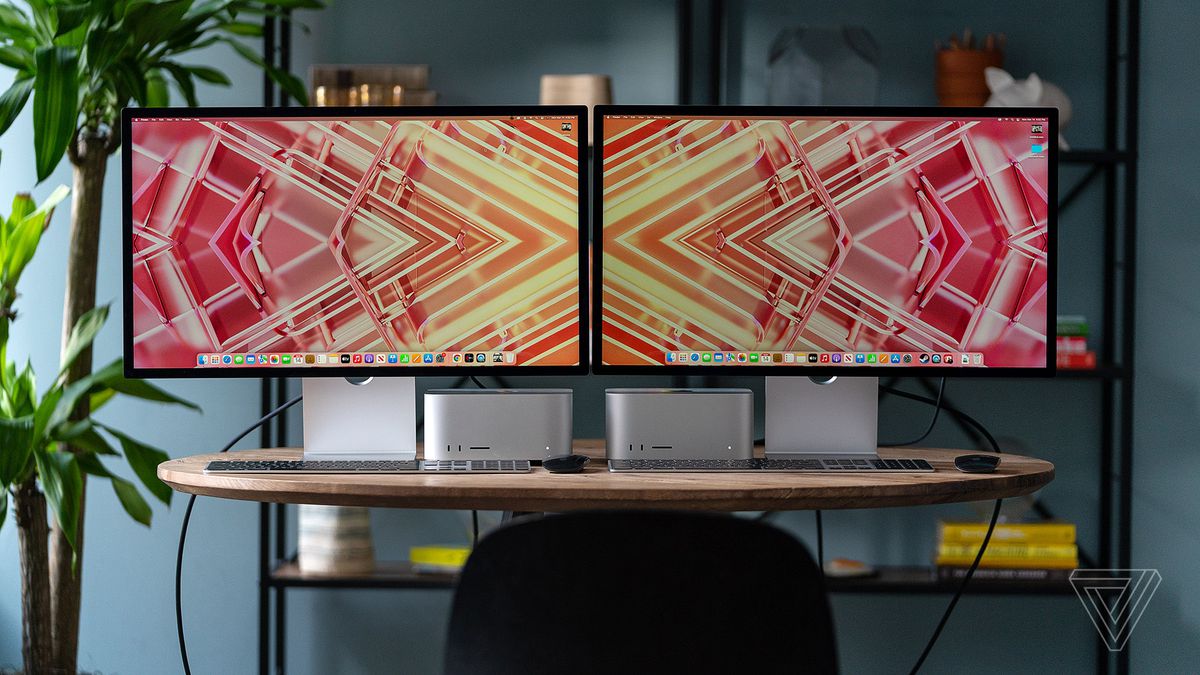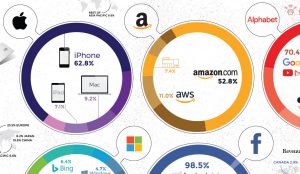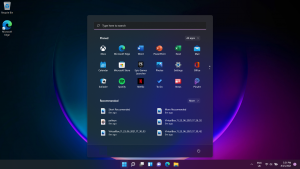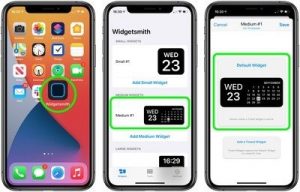
I was surprised when Apple introduced its $1,599 sibling to the $4,999 Pro Display XDR that the long-awaited model wasn’t simply a smaller, lower-brightness version of its big brother. The 27-inch Apple Studio Display isn’t bad, either: It offers good color accuracy and unexpectedly good speakers for a monitor, making it a good choice for Mac users. It’s pricey, but not excessively so for what it produces; it simply provides too much and too little for the money.
Even if you accept its typical Apple-ness (no physical controls, no easily accessible connections, having to pay extra for a height-adjustable stand, etc. ), it’s ultimately pricey for either category of people it’s designed for. It may have been a low-cost display with a webcam and speakers for the Mac Mini or MacBook Air, or a more expensive color-accurate monitor (without the webcam and speakers) for the Mac Studio and MacBook Pro for around $1,200. Attempting to be both at the same time incurs additional costs.
And, if the webcam is aimed at creators, it should be far better and include software controls rather than just a respectable high-resolution FaceTime camera with Apple’s Center Stage software for automatically zooming and panning around the image. I believe that most of the webcam’s flaws, such as the lack of a narrow-angle view for conferencing, underwhelming noise reduction, and a lack of global customization options, may be addressed with software upgrades. As long as you don’t mind the lack of ambient noise reduction, the audio quality of the mic was fine.
The speakers sound great for a monitor, but there’s some distortion when you crank them up, and I regret having a subwoofer and being able to control more than just the volume.
The display, unsurprisingly, does not work properly with Windows. Not only does the webcam go blank when MacOS isn’t installed, but the lack of an onscreen display for switching reference color profiles, along with Windows’ how-is-it-still-so-bad color-management interface, makes color management excessively difficult.
There are also certain prominent capabilities that would appeal to everyone that aren’t present. Although other Apple devices, such as the iPad Pro and some MacBook Pro models, include ProMotion, Apple’s 120Hz variable refresh rate technology for smoother video playback and gameplay, it only supports 60Hz. The Studio Display, like the XDR, has all of its controls in software, so you have to remove it to deactivate or turn it off, and it’s practically unusable without it.
There’s a single Thunderbolt 3 port for connecting the display, as well as three USB-C ports on the rear, which can be difficult to access, especially if you’re constantly plugging and unplugging items.
If you’re going to buy it, get the height-adjustable stand as well. To bring my desk to the proper height, I had to lift it. Although our product lacked the matte Nano Texture screen, the glossy version isn’t very reflective as long as there isn’t any light flowing in from behind.
But what about the screen?
The real display is nice, but not mind-blowing. Because it’s a typical IPS panel with a regular white LED backlight, it’s free of common artifacts like backlight and edgelight bleeding.
It’s rated for up to 600 nits with its default Apple P3-600 profile, and it hit around 590 in testing. However, the black is a little brighter than some other 600-nit monitors I’ve seen, at approximately 0.27 nits. Color and gamma are a touch less consistent in the deep shadows than the rest of the range, but not by much, as with many IPS screens. The contrast ratio is around 1,100:1, which is excellent for an IPS panel. Of course, when compared to the Pro Display XDR, there is a clear difference.
The color profiles perform as expected, with brightness, white point, and gamut bounds locked to the reference standards’ values. In other words, if you wish to work in sRGB, you’re limited to a brightness of 78 nits. Custom profiles can be created at any time, but they are not saved to the display.
Except for the HDR-related reference profiles, it has all of the same reference profiles as the XDR. All of the white points for the reference profiles were within 100K of their objectives (6400K to 6600K for a 6500K profile) and hit their respective gamma curves — but not quite as tightly in the shadows as previously noted. The same can be said for brightness goals.
The Studio Display is a superb Mac-only alternative to the slightly more expensive Pro XDR if you don’t need to worry about print, don’t care about HDR, and require something with far better-than-average color accuracy. The Studio Display, however, has a lot of competitors in its price bracket and below for folks who want even a little different set of features, so it’s not a perfect slam dunk.
How we test monitors
For HDR testing, a Calibrite ColorChecker Display Plus (previously X-Rite i1Display Pro Plus) colorimeter and a Murideo Six-G signal generator are used with Portrait Display’s Calman 2021 software on Windows PCs. The extent of our testing is determined by the monitor’s capabilities, the screen and backlight technologies employed, and the reviewer’s judgment.
On the most basic models, we can only evaluate brightness, contrast, and color gamut, whereas on more sophisticated displays, we can test the majority of user-selectable modes for gaming or color-critical applications, uniformity, and so on. We may also conduct tests to evaluate how white point accuracy varies with brightness for color work.
Calman’s basic Pantone patch set, as well as the grayscale and skin tone patches, were used to calculate color accuracy in Delta E 2000 units. The results for white points are based on the actual white value as well as the linked color temperature for the complete gray scale (21 patches, 0 to 100 percent) rounded down to the nearest 50K if there are no significant differences. Blur Busters’ motion tests are also used to assess motion artifacts (such as ghosting) and refresh rate-related issues that can hinder gameplay.
We use the same colorimeter for Mac-based monitors, but we test with DisplayCAL, a fantastic free color-management software based on the open-source ArgyllCMS engine. When possible, we take metrics that are equivalent to those taken on Windows systems.





